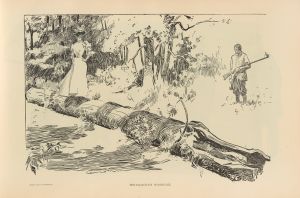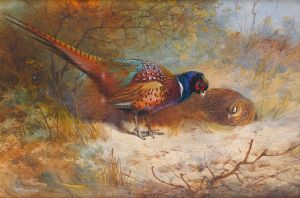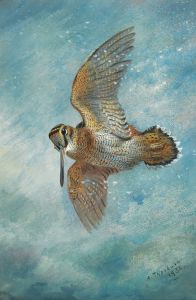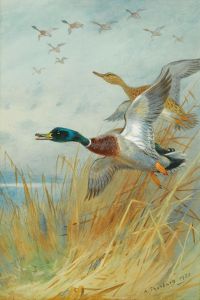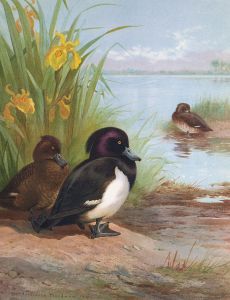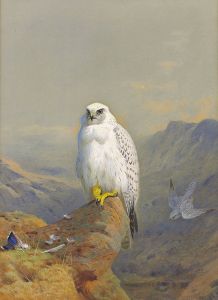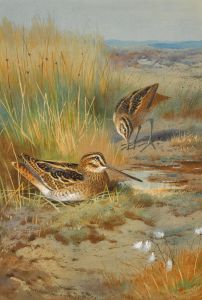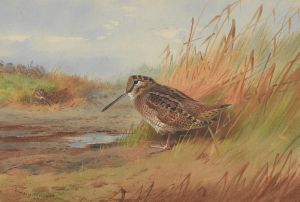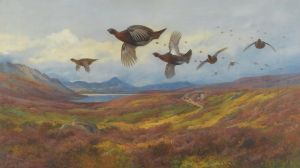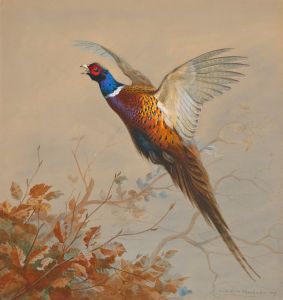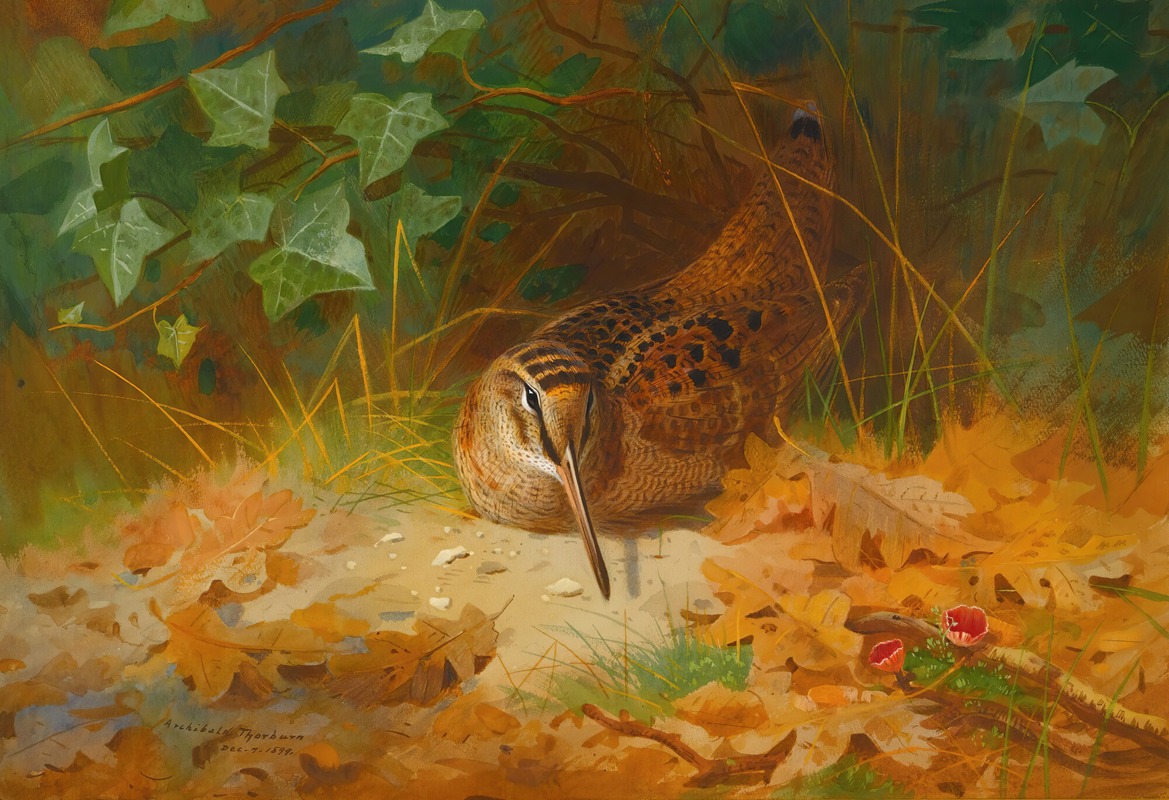
Woodcock
A hand-painted replica of Archibald Thorburn’s masterpiece Woodcock, meticulously crafted by professional artists to capture the true essence of the original. Each piece is created with museum-quality canvas and rare mineral pigments, carefully painted by experienced artists with delicate brushstrokes and rich, layered colors to perfectly recreate the texture of the original artwork. Unlike machine-printed reproductions, this hand-painted version brings the painting to life, infused with the artist’s emotions and skill in every stroke. Whether for personal collection or home decoration, it instantly elevates the artistic atmosphere of any space.
Archibald Thorburn (1860–1935) was a renowned Scottish artist and ornithologist, celebrated for his detailed and lifelike depictions of birds and wildlife. His works are widely regarded for their accuracy, artistic quality, and ability to capture the natural behavior and habitats of his subjects. One of his notable works, Woodcock, exemplifies his mastery in portraying birds in their natural environment.
Woodcock is a watercolor painting that showcases Thorburn's characteristic style of combining scientific precision with artistic beauty. The painting features a woodcock, a wading bird known for its distinctive plumage and elusive nature, set against a naturalistic background. Thorburn's attention to detail is evident in the intricate rendering of the bird's feathers, which display a complex pattern of browns and tans that provide camouflage in woodland settings. The background is painted with soft, muted tones, suggesting a forest floor covered in leaves, moss, and undergrowth, which enhances the realism of the scene.
Thorburn often worked outdoors, sketching directly from nature to ensure the accuracy of his depictions. His ability to observe and record the subtle details of wildlife made his paintings highly valued by both art collectors and naturalists. Woodcock reflects this approach, as the bird is portrayed in a lifelike pose, possibly in the act of foraging or remaining still to avoid detection. This level of realism was a hallmark of Thorburn's work and contributed to his reputation as one of the leading wildlife artists of his time.
Thorburn's paintings, including Woodcock, were frequently reproduced in books, prints, and other media, making his work widely accessible to the public. He contributed illustrations to several ornithological publications, such as Lord Lilford's Coloured Figures of the Birds of the British Islands and Archibald Stodart Walker's British Mammals. These collaborations further cemented his legacy as an artist who bridged the gap between art and science.
The exact date of creation for Woodcock is not definitively documented, but it is consistent with Thorburn's body of work from the late 19th and early 20th centuries. During this period, he focused extensively on British wildlife, particularly birds, and developed a reputation for his ability to capture the essence of his subjects in their natural habitats.
Today, Thorburn's works, including Woodcock, are highly regarded and can be found in private collections, museums, and galleries. His contributions to wildlife art continue to inspire both artists and naturalists, and his paintings remain a testament to his skill and dedication to the natural world.





